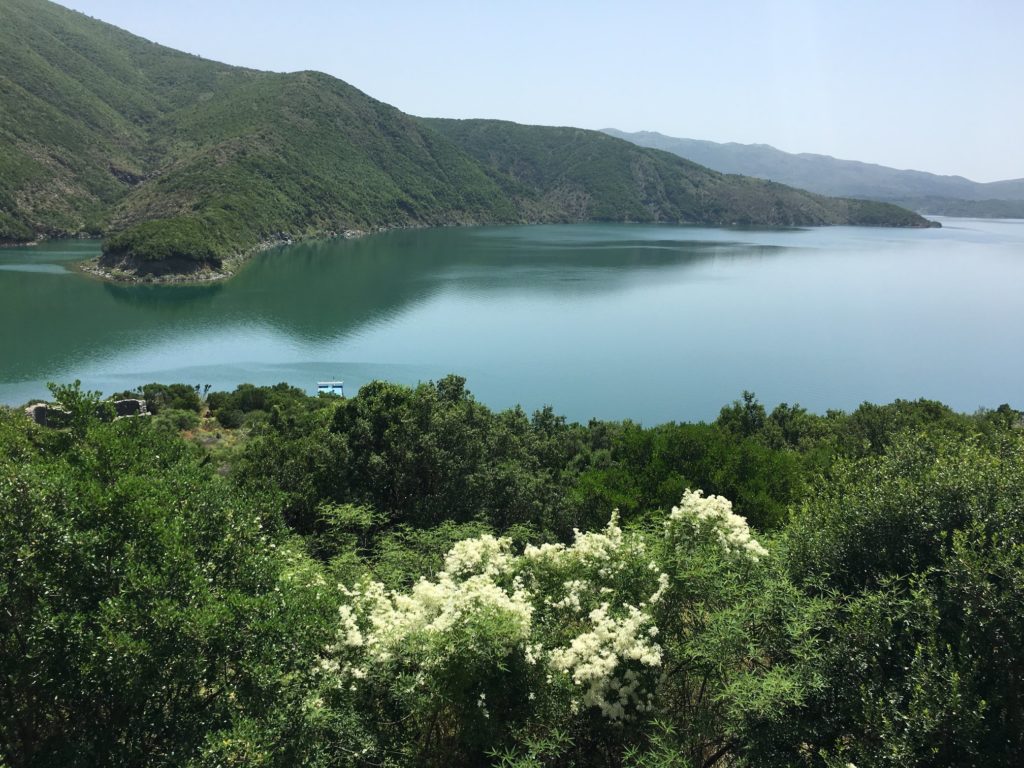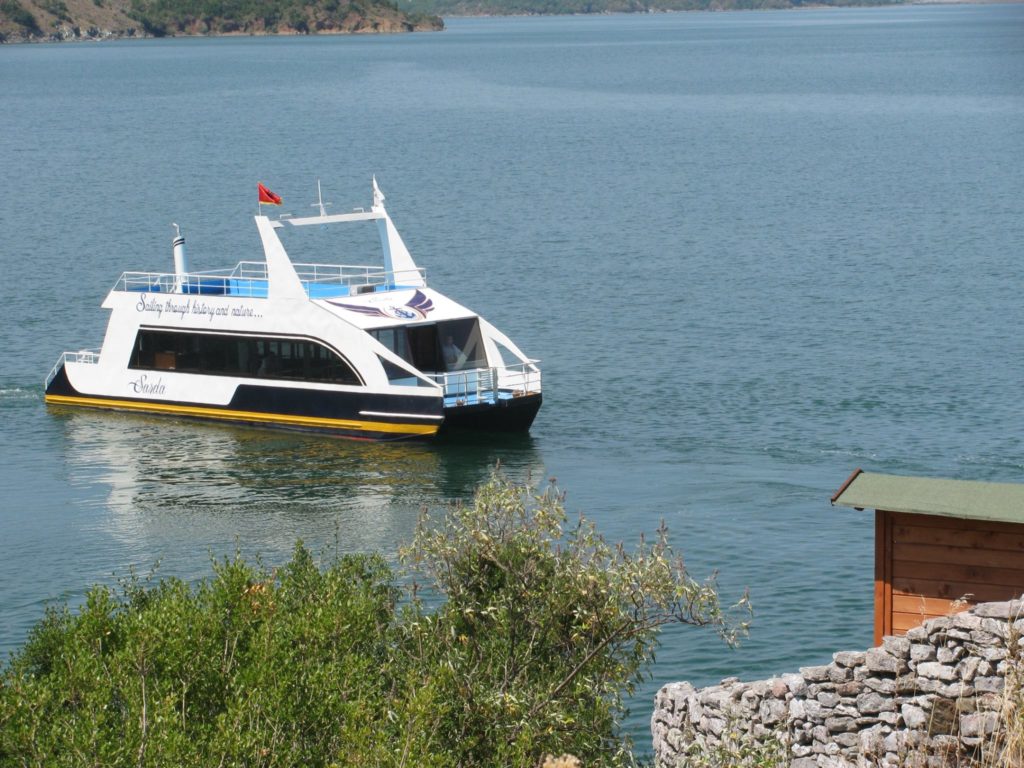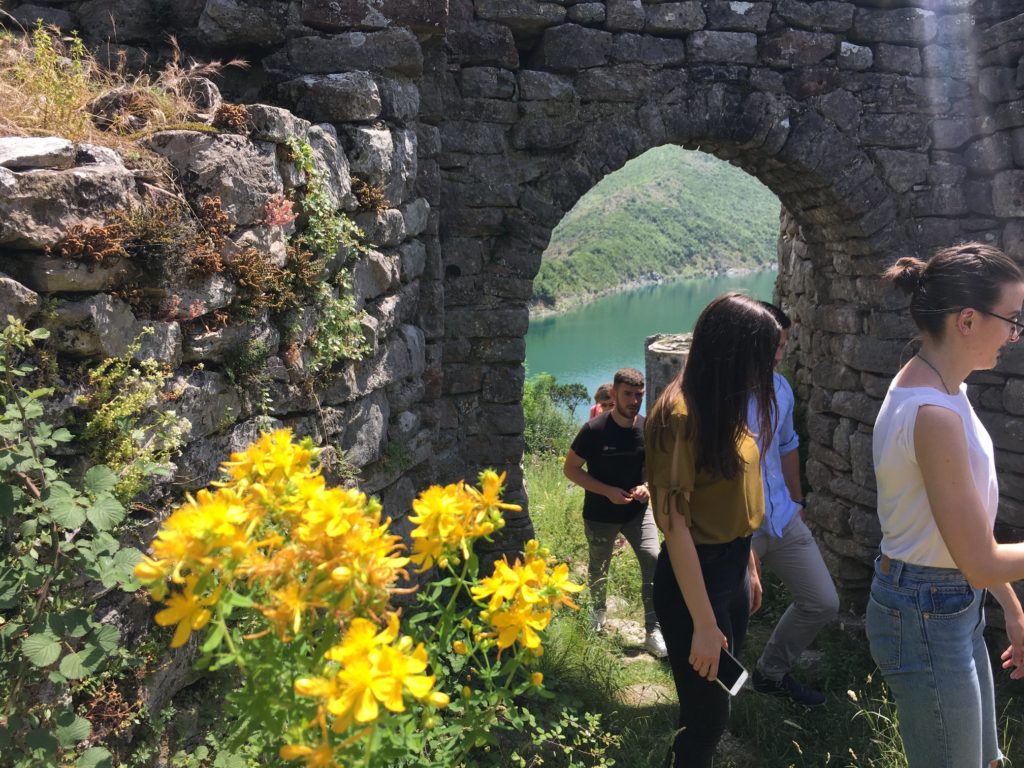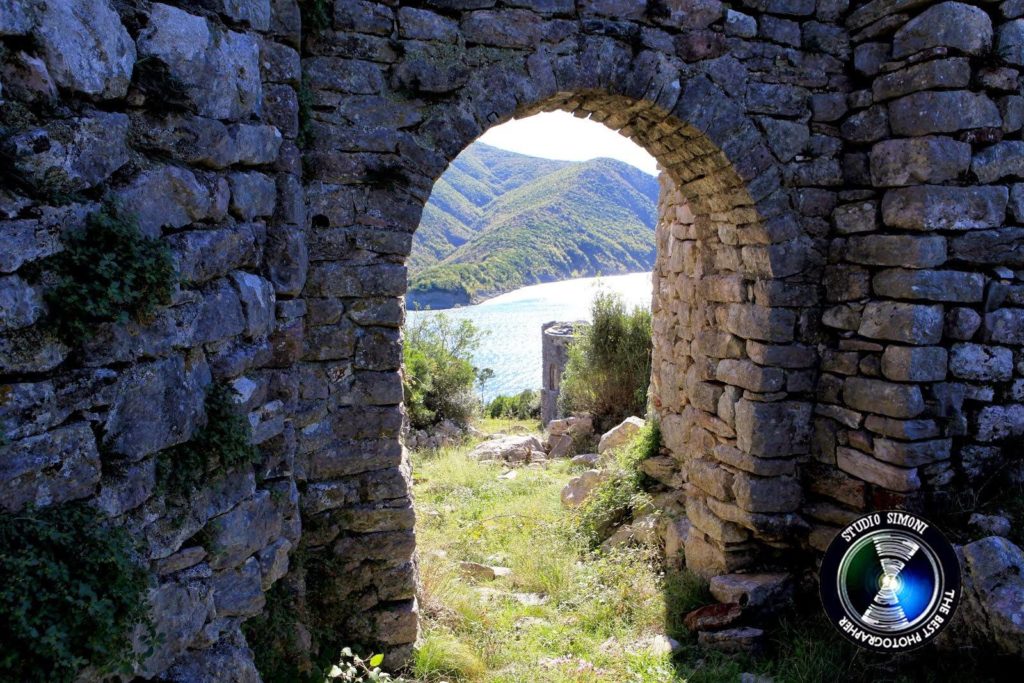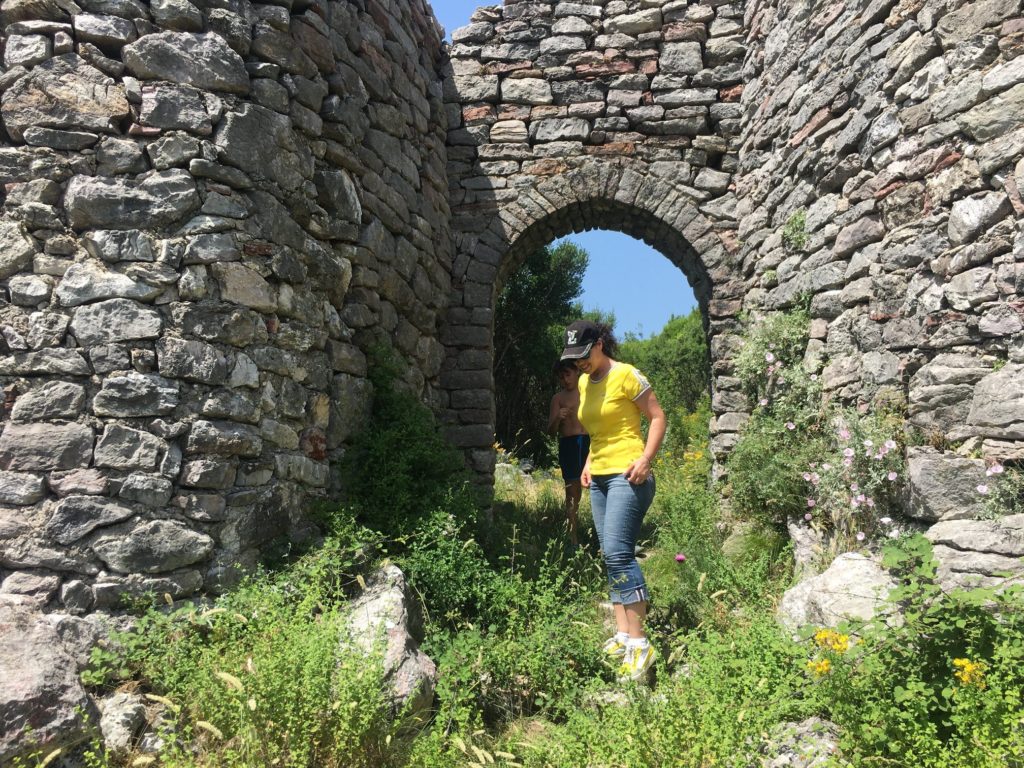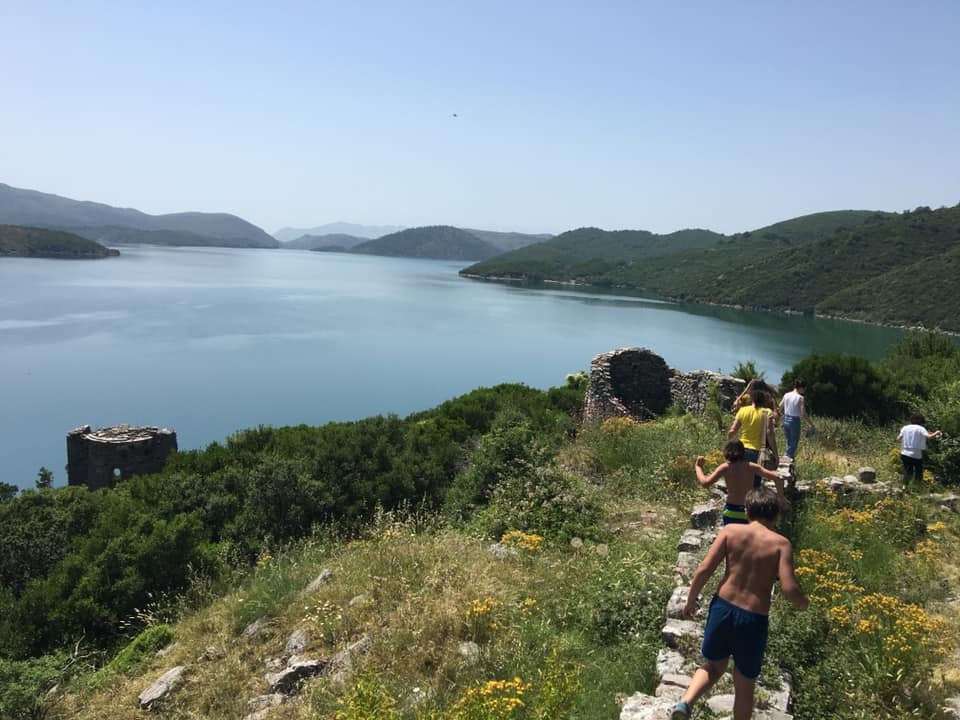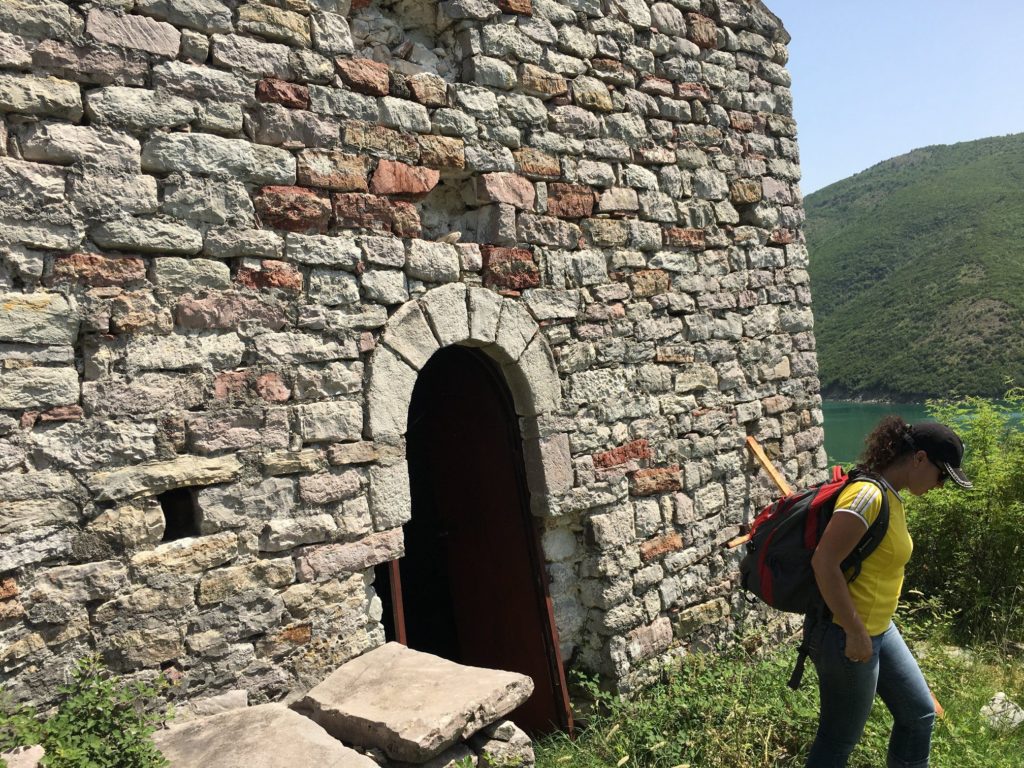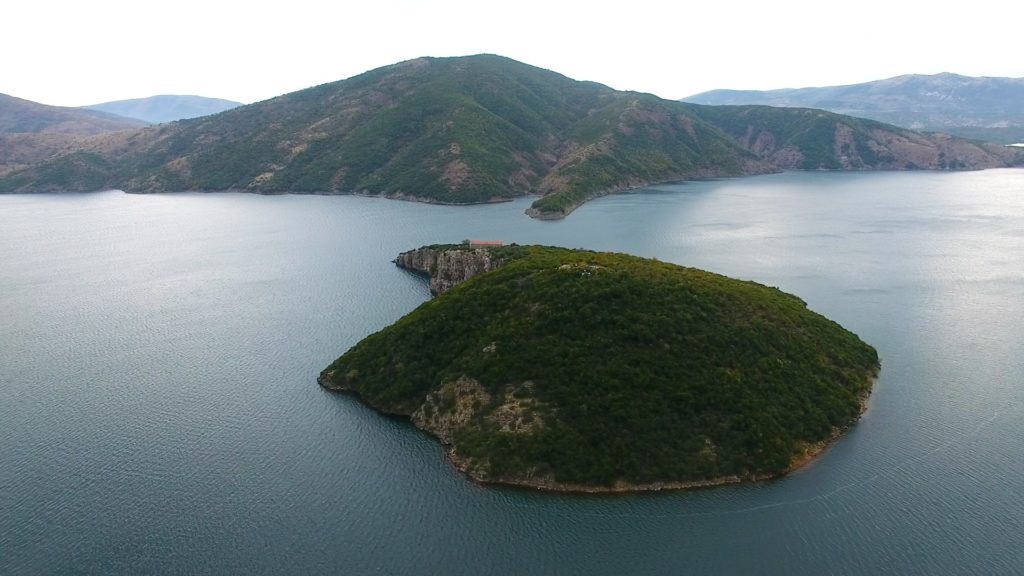Sarda Island the call of nature & history
February 17, 2020 || views
By Flora Xhemani Baba
The invitation of Agro-tourism Albania in Guri i Zi Party, where we would visit Shurdhahu Island, was like the best call of nature. In mid-June the island offers a real natural show, even though this year the temperatures were more like a once upon a time July, the heat was not going to stop us from this wonderful journey. It was wonderful since some years ago the island was navigable only by small boats, and despite your best efforts, the sun would be on top of your head all the time until reaching the coast.But now the journey is a beautiful sail in the board of “Sarda” yacht, which is run by the passionate Artef Lekaj, who tells stories to the tourists visiting the island from spring until autumn.
We are acquainted with the atmosphere of local parties. We are used to them by now. Our heart beats hard when hearing about a party in a new village, such as the one in Gur i Zi. So we departed toward Rragam, where the path to Vau Dejes Lake goes until the small boats dock. Here is also the Sarda yacht. We wouldn’t have missed the opportunity to visit the house of Dioniz and Anet Marku to taste the delicious foods of their agro-touristic farm, but Shurdhahu was waiting for us. The road going to Rragam was busy with trees, almost-ripe plums, and gardens with flourishing roses. Even though the last 2 kilometers going to the docks were unpaved, this didn’t obstruct our joy of the road. The entire place was donned with nature.
In the board of the Sarda yacht
I don’t know if this could be considered luxurious, so the reader expectations will not be confused, this modest catamaran is quite cozy for a group of tourists and it offers also a comfortable hall, a place to relax if you choose to stay away from the sun. And there is where everyone was sitting. The entire crew of Agro-tourism Albania was there, Ardiola, Jonida, Deni, Lea, the staff of the Municipality of Shkodra, the organizer of the trip. The motor unexpectedly switched off in the middle of the lake. We were afraid that our trip would be done without having started yet. When the yacht stopped, the cool air did as well, since wind wasn’t blowing over the lake that day. But, everyone pulled their smart phones out, trying to capture memories of the surroundings. Our boys couldn’t stand the heat any longer so they took off their shirts and jumped into the lake together with their dad. As the sweating and worried faces of Sarda crew were trying to fix the motor, our boys were joined by two German tourists, enjoying without care the crystal waters of Vau Dejes Lake. All spectators, majority from Shkodra and fewer from Tirana, were following them with smiling faces, especially when Hodoja and Arber jumped from the second pier of the ship into the water. The nicest surprise that helped us forget the wait was the solemn parade of tourists from Water Sport Albania, doing stand up paddle. They waved at us, maybe feeling a little sorry too, since they were peacefully sailing toward the coast. The motor uttered a loud sound and everyone was relieved. It was a minor issue that it took us a while to figure out. The boy who had cleaned the yacht yesterday had clogged the gas tube. We set out on our journey once again. The route leading to the island isn’t too long. 30 minutes give or take. In the distance, there are the ruins of the medieval city, which was run by Dukagjin family. We formed a line and followed Artef’s in the path that led to the mysteries and histories of this small island, which used to be a center for arts and civilization in medieval ages.
June had covered the island with Basami flowers, and Mediterranean shrubs flourished with a specter of colorful flowers. As we were following Artef and listening to his explanations, we left the ruins of the fortress, and admired the church fragments. Artef was keen to show the boys and the girls that made up the majority of the group the story of Crown Portico, which we had to pass before going to the ruins of the church. The story went as follows: the boys had to measure their height by the arch and if their head reached the peak, then they were ready to get married. However, not even the tallest boy could reach the archway peak since it was 70 cm above his head. So, everyone must stay single according to this legend. But, legends are legends, and are built upon exaggerations. When we entered the church, from which only the walls had remained, the altar and a bit of the completely ruined frescos, we saw that it had turned into a shelter for bats, a mammal that loves caves, therefore in this case they had found the right amount of gloominess. Across the church, on the eastern side of the island, the coast was steep and formed a scary deep canyon, with unmatched beauty, which would very likely in the future become the next adventure for climbing lovers and divers. Despite the beautiful nature, places like Sarda or Shurdhahu are ideal for botanists and nature lovers, and most of all, they are a valuable testimony of our heritage and Illyrian culture, documented in the long history of conquests and wars of foreign civilizations, which almost assimilated our Albanian ancestors. In the following paragraphs, you can read more about its history, as we successfully end our field trip, combined with a bit of adventure and a great desire to return to these lands, this time to discover Gajtan, the ancient Illyrian city. Thank you, Agro-tourism Albania, for the beautiful experience you invited us to partake in. Thank you Sarda Tours for this beautiful trip!
THE MEDIEVAL CITY OF SARDA
Shurdhahu, or Sarda was once a peninsula in the Drin river, where the Medieval city with the same name was also located. In 1973, when the hydrocentral dam of Vau Dejes was built, because of rising water levels, the peninsula of Shurdhahu turned into an island in the river of Drin, which in turn became a lake. The island is around 16.09 km away from the town of Vau Dejes and 6.4 km from the Rragam village, which was 9 km away from the city of Shkodra. The area around this cultural center is one of the most important archeological and historical sites. This is the early settlement of Gajtan (Cave of Gajtan), Castle of Danja, Castle of Dalmaca.
History of Sarda
The earliest period of the city belongs to the beginning and the construction of the castle of Shurdhahu is from the 6th- 8th centuries. The small city of Sarda, until the end of the 15th century, has been an important cultural center as well as a meeting point of three main cultures from three northern regions, the culture of Malesi, the culture of Mirdita and the culture of Zadrima, identified by their unique traits that have passed the test of time and cultural pressures exerted by different oppressors. In the 15th century, Sarda was considered an important Medieval urban center. According to data from various sources, Sarda was under the jurisdiction of the Dukagjini family, but in 1372-1444, it is thought that the city fell under the conquest of the Zahariaj, another Albanian dynasty from the neighboring territories owned by Dukagjini family. Sarda, before becoming a small city along the river of Drin, as a strategic island and an interconnecting point through the old road Gjakova-Shkodra- Ulcinj, was the settlement of the big feudal family of Dukagjini, where they built their palace, the ruins of which together with those of a Roman church, are still present today. Their destruction took place because of the Ottoman conquest in 1491. According to research studies, the changing of name to Shurdhah has an Illyrian origin. This is where the ruins of a Roman castle of the 6th-8th century BC were found. Sarda used to be a resting station in the old road of Dardania. In 877 it was the center of the region of Polat that included the highlands on both sides of the Drin from the Lake of Shkodra all the way to Kukes. The lack of old antique center around Sarda, has driven researchers to believe that the creation of the city is related to the Illyrian peoples with the same name, that used to live in the small city of Gajtan, where ruins have been discovered. After the destruction of Gajtan, its inhabitants moved away, searching a new place to live that would be more protected in the gloomy period of “barbarian attacks.” During the middle ages, the city is known as a center for bishops under the Archbishop of Tivar. Dom Gasper Gurakuqi, the founder of two biographies about the Diocese of Sapa (1929,1943), talks about a letter written by Celestini I that is addressed to the bishops of Illyria, who gathered in the Council of Efest, in 431. According to this document, Sarda served as headquarter for bishops since the year 431. Cult objects in the island of Shurdhahu Among the most important objects of the island of Shurdhahu are the churches. The most important is the St. Mary church, built on top of the ruined wall of the upper enclosure of the city, on the eastern front. The church, according to the archeologists Hena Spahiu and D. Komata, was positioned on the walls of an old church. In general, the churches of Sarda are similar to those in Sapa and Danja. The bishop of Sapa, Frang Bardhi, in the summary of 1641 sent to the Sacred Headquarters, marks down the 11 names of the churches of Sarda, as well as the number of other churches unidentified by name. Archeologists admit that Shurdhahu serves as a typical example of the inception, development and continuation of the civilized lifestyle during the early Albanian Middle Ages.
